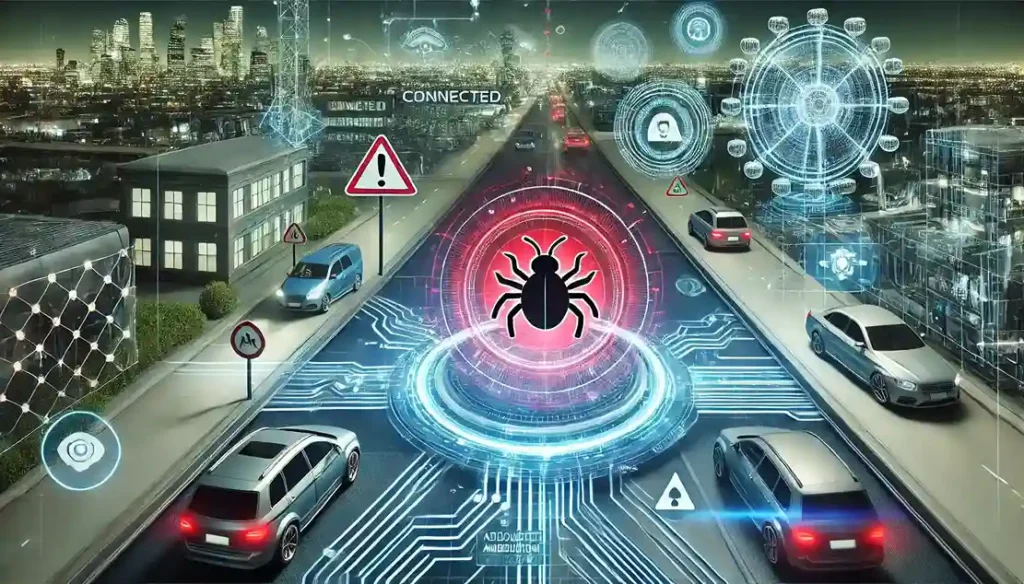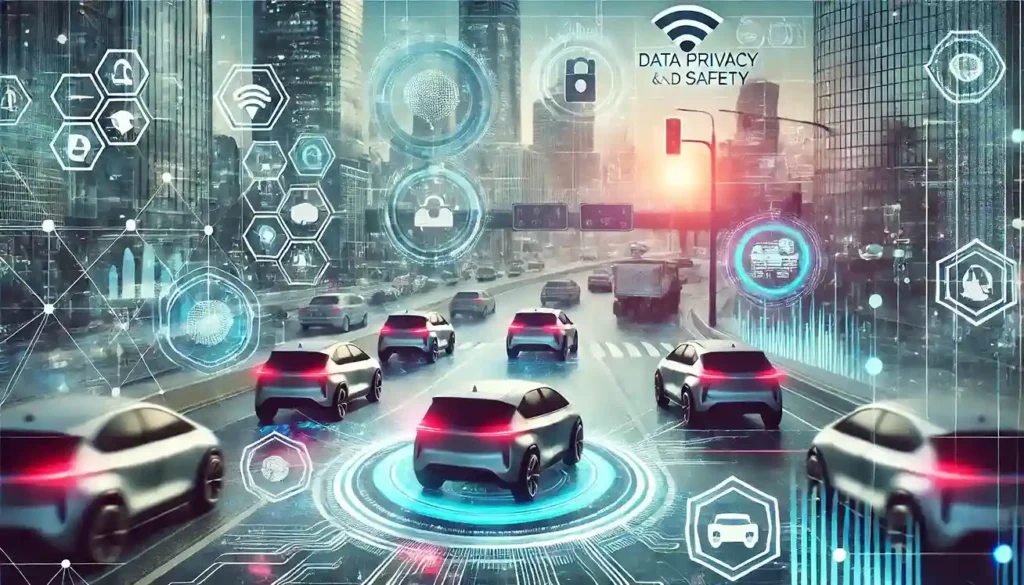Greetings, beautiful people! Do you really think this Connected World is a Safe Haven? Has anyone else really thought about the dangers that exist in all the interconnected devices in what has now become a normal life with technology? Everything is getting high-tech, from our phones to smart buildings.
But what if the tools we depend upon to make our lives much easier are subjected to severe and naked threats that have the potential to endanger millions of us citizens? Such is the unfortunate case of the automotive industry in which a simple fault in a website has rendered millions of vehicles as manipulation tools in the hands of hackers, allowing them to steal and surveil the vehicles.
Let’s start!
Connected Vehicles: A Rising Trend
For over a decade, changes in the automotive industry have affected the advancement of technology. Gone are the times when vehicles were merely machines; now cars come close to being mobile outlets with the internet, GPS systems, intelligence sensors, and software advancements. Performance data relayed via breakout locks or navigation, along with locked voice updates, occur through air-borne software fragmentation techniques.
Along with these advancements come risks. Smart vehicles-they- are connected into the cloud and over the internet, practically render them machines reliant upon software and hence susceptible to hackers, who can exploit the vulnerabilities of such systems for unauthorized access to vehicles’ networks.

It has evolved into a design flaw in cars that could be hacked through a network, raising fears of being able to access millions of cars for tracking or shutdown purposes. Not only does the opening cause the vehicle’s security to be compromised, but it also significantly increases risks in privacy and personal security.
Simple Website Bug Sparks Mass Hacks
The controversy centers around a simple design defect in software, which is associated with some of the car management systems. Most of the vehicle manufacturers have developed web portals and applications that allow customers to manage their automobiles without physically interfacing with the system. Such applications allow customers to lock or unlock car doors, switch on car engines, and obtain the position of the car, among other important details on the status of the vehicle.
Unfortunately, some of these platforms have vulnerabilities that hackers have used to gain access to a system illegitimately. Such a flaw implies that a malicious account would have access to all the features offered, as well as all the cars linked to that account. For example, this person could lock or unlock doors, switch off the ignition, and track the whereabouts of the vehicle.
Any such security breach would have disastrous consequences. A criminal organization, for example, could be using technology to turn off the engine of a moving vehicle while on the busy freeway or even lock that same vehicle in an isolated place where the owner would not have access. Besides internal security threats, safety is not the only cause for concern. Say a criminal has the ability to follow some vehicle around; then, most definitely, the owner is at risk of being followed, which means confidential day-to-day information about his life would also be accessible.
What Makes to Bug So Detrimental
A computer bug usually has a vast audience among software, but this bug is dangerous for the following reasons.
Widespread
Millions of cars of different brands face this vulnerability; it is not a problem of a single car manufacturer. It is shared within the automotive industry.
Easy Method
Some advanced hacking and cyber terrorist methods may fail, but the flaw can be exploited by an amateur individual in the shortest time possible. Ease, and even the tools that define this threat, show that it is low-level or unengaged activity and, thus, easily exposed to corrupt elements.
No Geolocation Required
This is evidently related to the access of this weakness into the system: It is possible for a hacker with malicious intents towards the bug not to be on-site in relation to the vulnerable vehicle and to penetrate the system no matter the traversed sites as long as the hacker is connected to the Internet.
Hard Identification
Most probably, a large number of car owners do not even know whether their vehicles have been hacked, or even compromised in some other way. A raised level of physical evidence that something is amiss will prove too late to investigate or tackle such a threat.
Capacity of a Mass Attack
Since this vulnerability affects a huge number of vehicles, the chances of mass strikes are high. Theoretically, therefore, hackers would be able to hack a very large number or maybe even all cars in one go – thereby creating a great havoc and chaos in the world.
Impact on Privacy and Security

Moreover, among all the safety issues that can arise, here is still a worrying concern: data privacy. Today, data forms the most precious thing-as automobiles constantly churn out irrelevant data every second. Everything from the driver’s activity to vehicle movements and modern driving trends has triggered massive collecting and storage of data with regard to car ownership.
And what the user does not actually expect: the car carries this all without giving you any notice, by which, once gained by a hacker, the following could be achieved:
Movement Tracking
Once the bug is activated, the hacker may track the actual movements of the vehicle in specific areas. This means that this person will be able to follow the route the car has taken, how long it stays at each location, and even what the owner is doing, which could be used to predict that owner’s next location.
Stalking And Harassment
Tracking someone traveling from one point to another can be positive or negative. Bad scenarios can even go so far as leading to physical harm since a given security threat can use this information to track the owner of the car.
Data Commercialization
This data may even be sold to interested “users,” such as advertising agencies, spy agencies, or even terrorists. These are the ones that could create enemies openly and unnecessarily follow.
Corporate Espionage
For instance, by an eminent person, such as an official or politician, those cars would harbor terrible secrets meant for competing rivals. This was just one of the ways hackers could do espionage; another reason people could use it was profit.
Securing the Future of Connected Vehicles
With the fast-paced advancement of the automotive industry, the point of cybersecurity is becoming even more important for vehicle owners. Indeed, it has uncovered a lot of critical deficiencies in systems currently in place; it is also a ringing alarm for all automakers, regulators, and even consumers.
On a happier note, among the many developments that future must-the inevitable-were, is for the automotive manufacturer to take security as one of the most salient features in designing and making all their cars: it will have to include encryption facilities, conduct timetable evaluations of security systems, and fan out resources to deal with threats for any danger that may come.
For the consumer, it really is simple: the digital age brought along all manner of platforms and devices that we could not do without, including cars, and exposed one to cyber risks. Yet, these can and should be modified as safe so that risks associated with such a digital, interconnected world are minimized.
It is indeed a race of sorts in what has turned into a very ugly race of securing the connected vehicles; however, one thing is rather certain: the future of driving will not only be about the advances in the driving technology, but it will also be about protecting such technology from malicious individuals.

Conclusion
As for car producers, this revelation will be a cause for concern even to consumers. At the same time our cars are becoming smart devices that use the internet, they are now as exposed to hacking as our cell phones and home networks.
In the end, the promise for the future lies not in defense or coercion. It is also important to protect even the very infrastructures of innovations. So should be the case with the enhancement in intelligence in cars that is accompanied with such intelligence in securing from external threats the users of such vehicles. Let us know did this article help you to know alarming security flaws?
FAQs
- What is the main security risk associated with connected cars?
Hackers can manipulate cars using a simple software bug in vehicle management systems, tracking location, locking or unlocking doors, and even shutting down the engine remotely.
- How ubiquitous is the vulnerability within connected vehicles?
Millions of vehicles from different manufacturers have this software bug, which means it is a significant threat to many cars worldwide.
- What are the privacy concerns concerning connected vehicles?
They can stalk, harass or use sensitive information they sell to others-including advertisers and agencies.
- What future protection would the automotive industry put in place for connected vehicles?
Such would include cryptography, periodic security assessments, and use of resources in addressing cyber threats in connected vehicles.




